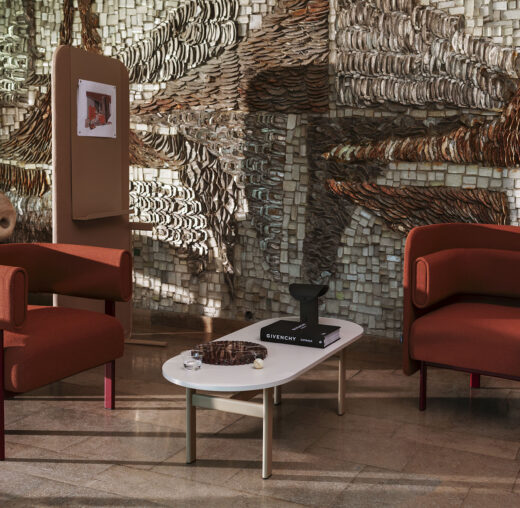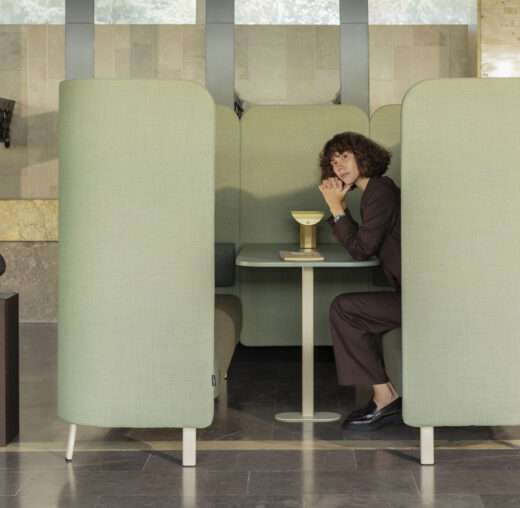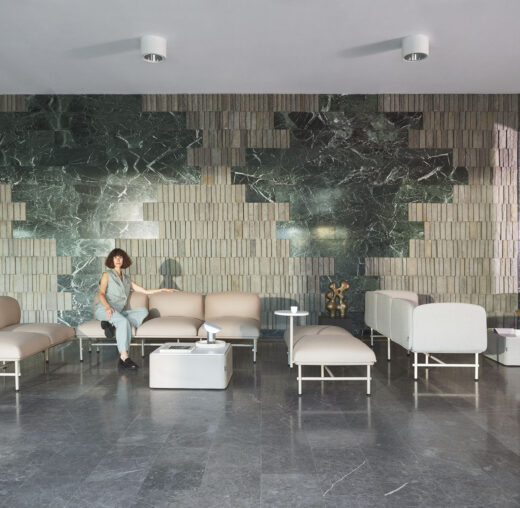Modern offices need to be more flexible than ever. Companies are expanding, restructuring, and adapting to the growing popularity of hybrid work, making traditional office layouts increasingly inadequate. Employees no longer spend their entire day at the same desk, and teams require diverse spaces—whether for focused individual work, creative brainstorming sessions, or virtual meetings.
A well-designed office should evolve alongside the company, adjusting to its ever-changing needs. Here, furniture and interior design play a crucial role, with modular solutions, mobile partitions, and height-adjustable desks enabling a more dynamic workspace.
Zones designed for different needs
A modern office should accommodate different work styles to ensure both comfort and efficiency for all employees. Some thrive in quiet, focused environments, while others prefer dynamic collaboration, and many appreciate spaces for relaxation between tasks. That’s why more and more companies are designing office spaces with distinct zones tailored to various functions. A well-structured workspace not only boosts productivity but also enhances employee well-being and overall workflow organization.
Quiet zones are an essential part of a flexible office, providing spaces for focus and individual work. These can be dedicated rooms, but mobile acoustic partitions are just as effective, allowing the workspace to be quickly adapted to employees’ needs. They make it easy to create temporary quiet areas without the need for permanent changes to the office layout.
Just as essential are collaborative spaces that encourage team meetings, brainstorming, and project work. Conference tables on wheels offer flexibility by allowing easy rearrangement, while modular sofas can be adjusted to accommodate different group sizes and meeting dynamics.
To make an office truly functional, relaxation zones are essential. Short breaks during the workday help restore energy, improve mood, and boost productivity. Comfortable armchairs, swings, and even small green spaces filled with plants can significantly enhance the work environment.
Flexibility is key to designing a modern office—the easier it is to adapt the space to the team’s evolving needs, the better it supports both focus and collaboration. By incorporating modular furniture and smart solutions, you can create a workspace that not only meets employees’ needs but also evolves alongside the company.
Modular furniture – the key to a flexible workspace
Modular furniture is the key to a flexible office that can easily adapt to dynamic changes in work organization. These versatile solutions consist of individual components that can be effortlessly rearranged, combined, and expanded. This flexibility allows the workspace layout to be adjusted quickly to meet the evolving needs of the team.
In today’s modern office, where hybrid work and frequent reorganizations have become the norm, modular furniture enhances functionality and ensures the efficient use of available space.
Seating and acoustic wall systems are among the best examples of flexible office solutions, offering multiple functions to meet evolving needs. The Quiet collection features mobile panels that help create quiet zones and private spaces within open offices. Thanks to their modular design, these panels allow for effortless reconfiguration whenever the office layout or team dynamics change.
On the other hand, the Snake collection introduces innovative seating that can be arranged in various shapes—from straight lines to curved configurations that foster interaction and collaboration.
Another excellent example of modular solutions is the Modus collection, which seamlessly blends aesthetics with functionality. These adaptable systems allow furniture to be easily configured for different work styles, whether in coworking environments or individual focus areas. The ability to modify the office layout within minutes makes it a dynamic, ever-evolving space that meets a company’s growing demands—without the need for costly renovations or complete furniture replacements.
This demonstrates that modularity isn’t just about convenience—it’s also about efficiency, cost savings, and smarter workplace organization.
Office adaptation for company growth
As a company grows, its spatial needs evolve. The addition of new employees, team reorganizations, or the adoption of a hybrid work model require an office that is flexible and adaptable. Traditional fixed workstation layouts are becoming less effective, leading to a greater emphasis on multifunctional spaces that can be easily reconfigured. Thoughtful office planning not only maximizes space efficiency but also enhances employee comfort and productivity.
One of the best solutions for flexible offices is multifunctional furniture, which enables quick and easy reconfiguration. Folding tables, sit-stand height-adjustable desks, and mobile partitions allow the workspace to adapt seamlessly to the company’s evolving needs.
Depending on the situation, the same area can serve as a conference room, a collaborative workspace, or a quiet zone. This approach not only enhances office functionality but also helps avoid costly renovations in the future.
Modern technology is playing an increasingly important role in managing flexible offices. Workspace reservation systems optimize space usage in hybrid work models, while smart lighting and acoustics help tailor the work environment to different tasks.
Investing in durable, well-designed furniture is equally essential, ensuring longevity and resilience to heavy use. High-quality furnishings offer more than just comfort and aesthetics—they are also a cost-effective solution. Sturdy, long-lasting equipment reduces the need for frequent replacements, benefiting both the company’s budget and sustainability efforts by minimizing waste.
The future is unpredictable
Investing in flexible solutions is a smart way to optimize space utilization and enhance office functionality. By incorporating modular furniture and technologies that support workflow management, companies can minimize the need for constant reconfigurations and focus on growth. Convenience, mobility, and the ability to personalize workspaces contribute to a more comfortable work environment and have a positive impact on team productivity.
The office of the future is a space designed to foster both focus and collaboration. With smart technologies and modern furniture, any company can create a work environment that supports dynamic growth and promotes a flexible approach to organization. Now is the time to consider solutions that not only streamline daily tasks but also contribute to long-term success.





